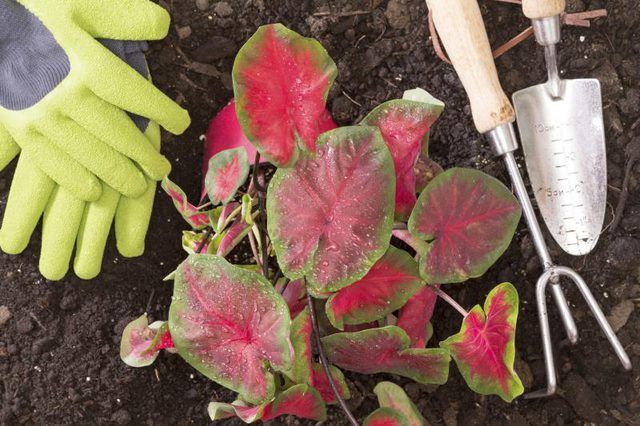Bulbs
Flower Basics
Flower Beds & Specialty Gardens
Flower Garden
Garden Furniture
Garden Gnomes
Garden Seeds
Garden Sheds
Garden Statues
Garden Tools & Supplies
Gardening Basics
Green & Organic
Groundcovers & Vines
Growing Annuals
Growing Basil
Growing Beans
Growing Berries
Growing Blueberries
Growing Cactus
Growing Corn
Growing Cotton
Growing Edibles
Growing Flowers
Growing Garlic
Growing Grapes
Growing Grass
Growing Herbs
Growing Jasmine
Growing Mint
Growing Mushrooms
Orchids
Growing Peanuts
Growing Perennials
Growing Plants
Growing Rosemary
Growing Roses
Growing Strawberries
Growing Sunflowers
Growing Thyme
Growing Tomatoes
Growing Tulips
Growing Vegetables
Herb Basics
Herb Garden
Indoor Growing
Landscaping Basics
Landscaping Patios
Landscaping Plants
Landscaping Shrubs
Landscaping Trees
Landscaping Walks & Pathways
Lawn Basics
Lawn Maintenance
Lawn Mowers
Lawn Ornaments
Lawn Planting
Lawn Tools
Outdoor Growing
Overall Landscape Planning
Pests, Weeds & Problems
Plant Basics
Rock Garden
Rose Garden
Shrubs
Soil
Specialty Gardens
Trees
Vegetable Garden
Yard Maintenance
Caladium Vs. Coleus
Caladium Vs. Coleus. Caladium (Caladium bicolor), hardy in U.S. Department of Agriculture plant hardiness zones 9 through 10, and coleus (Solenostemon scutellarioides), hardy in USDA zones 10 through 11, enhance gardens with their colorful foliage from spring through frost. They are most often grown and treated as annuals, though both are...

Caladium (Caladium bicolor), hardy in U.S. Department of Agriculture plant hardiness zones 9 through 10, and coleus (Solenostemon scutellarioides), hardy in USDA zones 10 through 11, enhance gardens with their colorful foliage from spring through frost. They are most often grown and treated as annuals, though both are perennials. Providing color and interest in gardens with partial to full shade, coleus and caladium are widely available, relatively inexpensive and fairly easy to care for. Coleus is especially vigorous and has been reported as invasive in a few areas.
Defining Features
Coleus and caladium are similar in overall size, with coleus growing 6 inches to 3 feet tall and wide and caladium reaching 1 to 2 1/2 feet tall and wide. Both feature multi-colored foliage. Arrowhead-like caladium leaves, which can grow to 18 inches long, display splashes and edges of pink, red, green and white, often with contrasting veins. Coleus leaves are smaller and oblong. Many varieties feature toothed edges and some are deeply dissected. The color range is greater than that of coleus, with leaves striped, edged or mottled in every color except true blue. Though the two plants flower, blooms are generally insignificant.
Cultural Requirements
Both caladium and coleus thrive in consistently moist soil and should receive supplemental water in hot, dry weather. Caladium is susceptible to wind and hail damage and should be planted in a protected location. Coleus is also susceptible but because of its rapid growth rate can rebound faster from weather-related injury. Once established, caladium needs little grooming. Coleus, on the other hand, should be pinched or clipped back regularly to keep plants compact and bushy. Snap off the top third of each stem on the plant by pinching with a thumb and forefinger.
Multiple Uses
Incorporate coleus and caladium in similar ways in garden beds and borders, as well as containers and window boxes. Caladium, with its larger leaves, offers a tropical look and pairs well with similar moisture- and partial shade-loving tropical plants, like ginger or butterfly lily (Hedychium coronaries) and taro (Colcasia esculenta), both hardy in USDA zones 8 through 10. Coleus mixes nicely with shade-loving bedding plants like New Guinea impatiens (Impatiens hawkeri), hardy in USDA zones 10 through 12, and the annual wishbone flower (Torenia fournieri).
Winter Accommodations
Though coleus and caladium are generally treated as annuals in cold winter climates, they can be maintained indoors through winter as pot plants. To do so, provide consistent moisture and bright light (bright indoor light corresponds to part shade outdoors). Alternately, dig caladium tubers after the first frost, dry for a few days and store in sand or peat moss in a cool, dry location. Replant the tubers in spring. Overwinter coleus plants and take stem cuttings in late winter. Root in a glass of water and, after roots develop, plant in starter pots.